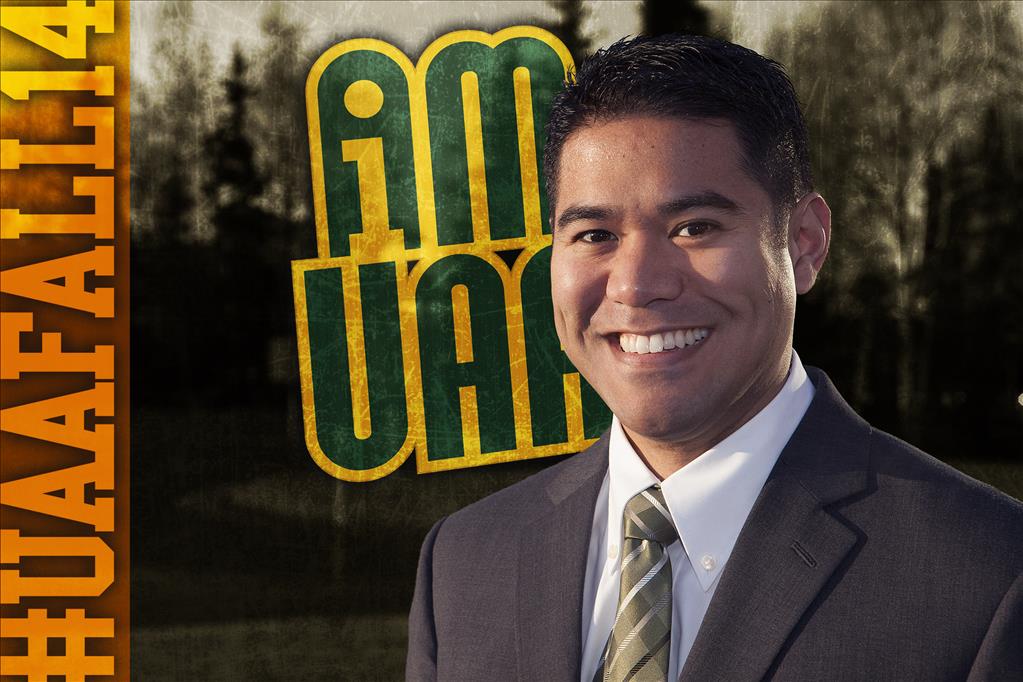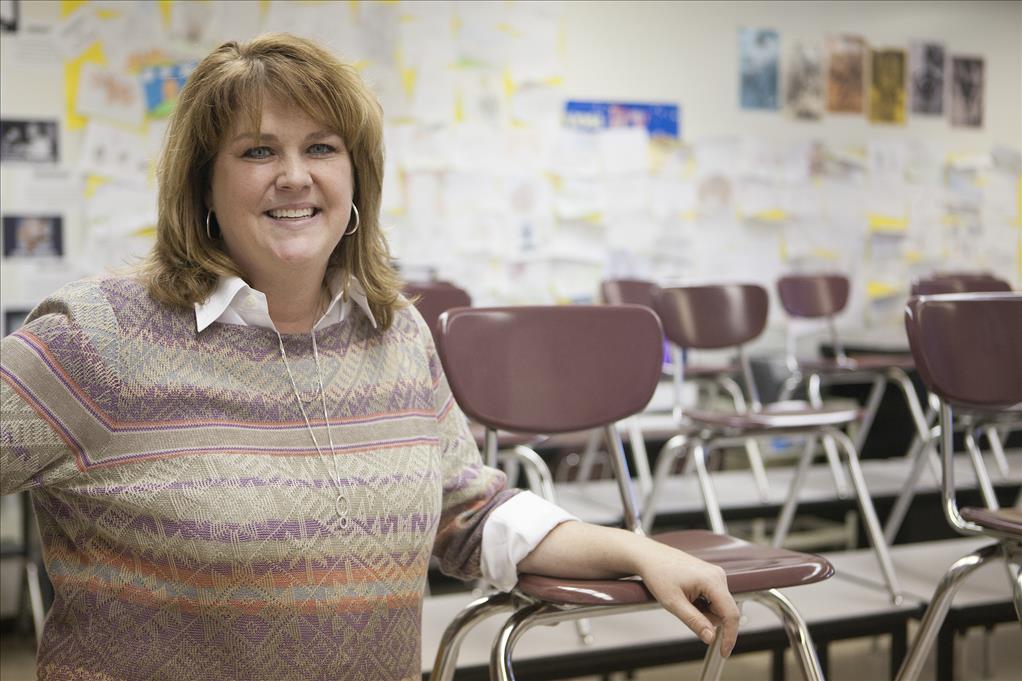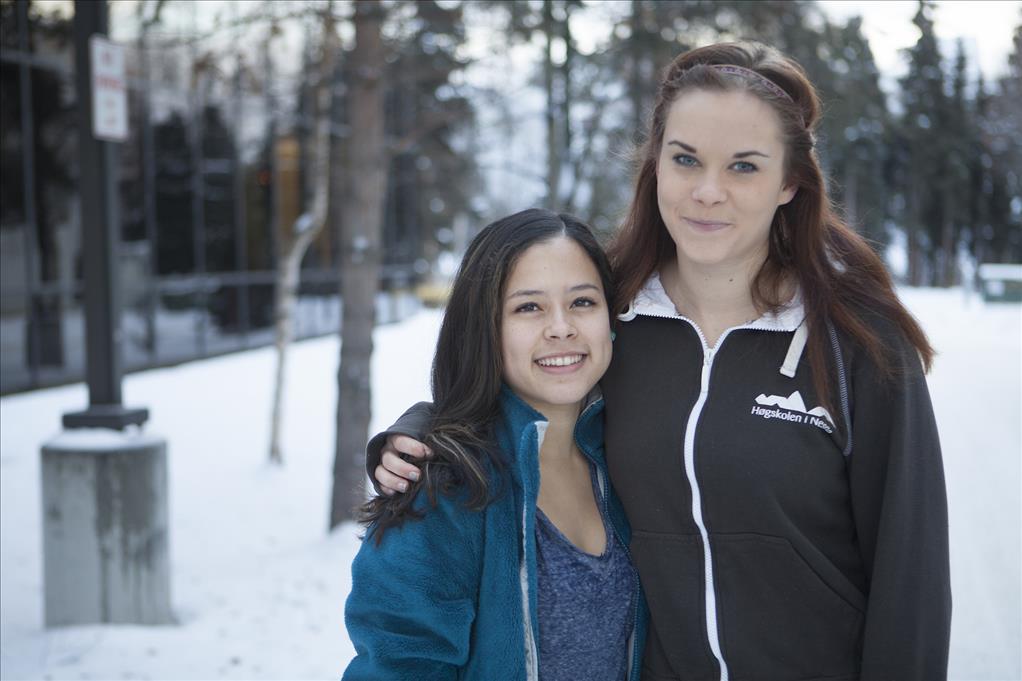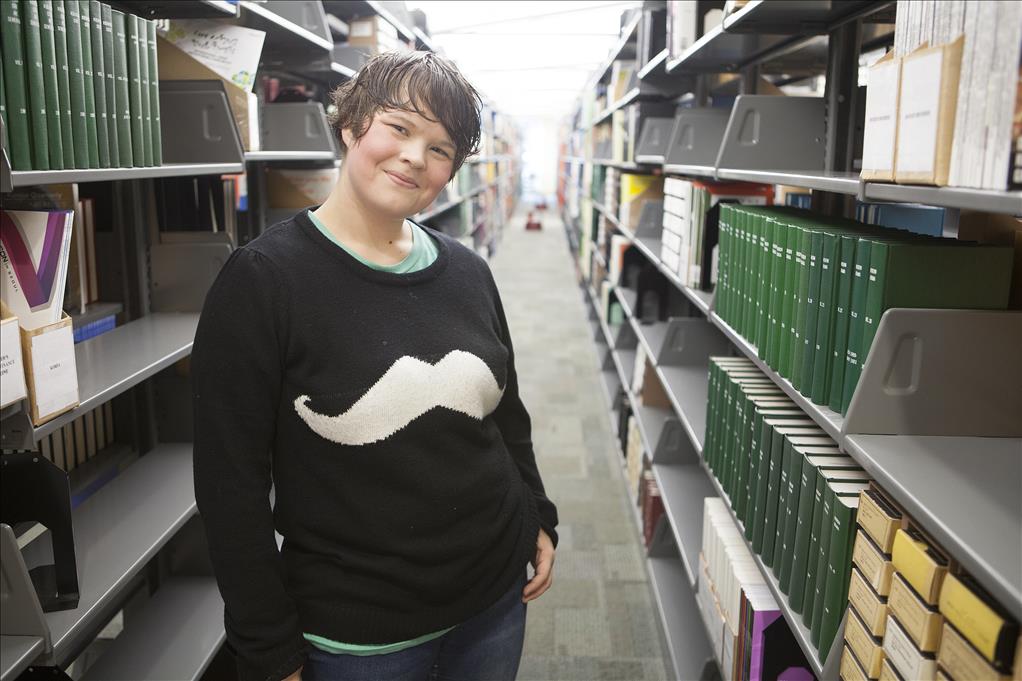UAA students' work to fight domestic violence, sexual assault attracts JBER attention
by Kathleen McCoy |

Simona Gerdts and Kristen Speyerer as seniors, and now graduates with degrees in Justice, wearing the "No More" T-shirts, uniting UAA's campaign "UAA says No More," with the national campaign. (Philip Hall/University of Alaska Anchorage)
When journalist Brooke Gladstone of National Public Radio's "On the Media" was in town for a public talk in late February, she told the Wendy Williamson audience that about 80 percent of American voters have "checked out."
She referred to the book "Changing Minds or Changing Channels," which contends, "Essentially huge numbers of voters are opting out of the conversation entirely, because they think they have better things to do."
Considering the complex decisions facing Alaska, and the struggles of many Alaskans, abandonment feels dangerous. I know Gladstone spoke in national numbers but hey, what was the voter turnout in Anchorage's last election? Just 28 percent.
That check-out rate nagged me. It was on my mind when I sat down with Simona Gerdts and Kristen Speyerer, two UAA spring graduates with fresh degrees in justice.
Last semester, these two and a handful of others launched a rebuttal to domestic violence and sexual assault at UAA, called "UAA Says NO MORE." It snowballed from:
- Doing "maybe a fundraiser for AWAIC or STAR," to
- Hosting a March 19 information panel that drew a packed and sometimes tearful audience, to
- Launching a social media campaign of public self-declarations against violence, to
- Inspiring an Alaska Native student to return to the village where she'd been raped and tell her story publicly there, to
- Presenting their work, by invitation, to Col. Adam Lange, deputy commander, U.S. Army Alaska at JBER on April 11.

Captain Danyelle Kimp, center, nominated Gerdts and Speyerer for a Victims for Justice media award related to their promotion of "UAA Says No More" to end domestic violence and sexual assault. Kimp has worked to promote similar ideas within the Alaska military and was inspired by their commitment to nominate them for the honor. (Photo courtesy of Simona Gerdts)
Ultimately, Gerdts and Speyerer helped forge a working relationship between UAA and its Justice Center and the United States Army Alaska over domestic violence and sexual assault issues.
Why? Because "We have the same demographic," said Lt. Col. Alan Brown, U.S. Army Alaska spokesman. "We're 70-80 percent male, ages 18-25. It makes sense to look and find commonalities between campus and military installations."
Another military leader from the U.S. Air Force, Command Chief Master Sergeant Jose A. Barraza, learned of their efforts and came over to UAA to attend their information panel. Barraza gives similar informational sessions in the military and saw his presence at UAA as a way to support the work off-base.
"I wanted to come out and support them. We're all in this together, the military and the community. I wanted to show that," he said.
We know Alaska statistics are the worst in the nation. Out of every 100 Alaska women, 59 have experienced intimate partner violence, sexual assault or both.
From pain to involvement
But this column isn't about those numbers, alarming as they are. What I wanted to know is: How and why does a passive bystander decide to step up and do something? How did two busy seniors switch from a modest donation drive to a campus movement that eventually reached into JBER? Is there a lesson here for the "checked-out"?
Kristen Speyerer, who floundered and dropped out of UAA in 2004, went to work at FedEx for 10 years, climbing the corporate ladder. "But that wasn't what I really wanted to do," she says. In 2011, she tried out a paralegal class at UAA and learned about an array of social problems, including domestic violence and sexual assault. "People close to me have had that experience," she said. "It resonated."
For Simona Gerdts, the story is longer and more painful. As a toddler in Florida, she watched her father beat her mother, including the dark day her mother grabbed her and her brothers' hands and fled forever. Gerdts was 5.
She resented growing up poor. She lionized her distant father and impugned her mother for the family's poverty. At 15, she got pregnant but kept her baby and partner, Alan. Together they graduated from high school a year early and married. Alan joined the Air Force, and, along with a second son, Aydan, the family eventually reported for duty in Alaska. As Aydan turned 5, Gerdts decided to study for a paralegal certificate at UAA.
As in Speyerer's case, justice classes, research and professors opened her eyes.
"If you would have asked me a year ago if I see myself in an advocacy role, I would be, 'What are you talking about?' But then we started this research project. We took that number (60 percent experience rate for Alaska women). That is six out of every 10 women you walk by, every day. You can put names and faces to it. It's really hard not to want to stop it."

UAA Says No More campaign donated high heels to the Port Heiden "Walk a Mile in Her Shoes" event. (Photo courtesy Sarah Anderson)
So they went to work. Perhaps most inspiring is the story of a UAA journalism student, Sarah Anderson, who drew support from UAA's NO MORE movement to return to the village of Port Heiden where she'd been raped years earlier. She told her story in public there, and even led a "Walk a Mile in Her Shoes" with men and boys in the village, complete with 10 sets of high heels donated by UAA's NO MORE. Of course, the pictures are on Facebook.
Next up: marital rape
Gerdts and Speyerer, degrees in hand, aren't done. Next up? Working to remove an Alaska statute that, in certain circumstances, offers a defense in the case of marital rape.
"It's our goal," Speyerer said, "even if we have to co-author the bill."
What does it take to reach the "checked-out"? Information. Commitment. Pain.
A version of this story by Kathleen McCoy appeared in the Anchorage Daily News on Sunday, May 25. "UAA students' work to fight domestic violence, sexual assault attracts JBER attention" is licensed under a Creative Commons Attribution-NonCommercial 4.0 International License.
"UAA students' work to fight domestic violence, sexual assault attracts JBER attention" is licensed under a Creative Commons Attribution-NonCommercial 4.0 International License.















